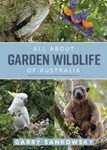Field / Identification Guide
By: Grant Palmer(Author), Jules Farquhar(Author)
416 pages, colour photos, colour distribution maps
![Wildlife of Victoria's South-West Wildlife of Victoria's South-West]()
Click to have a closer look
About this book
Contents
Customer reviews
Biography
Related titles
About this book
Victoria's South-West is an iconic region of Australia that includes the exceptional landscape features of the Grampians-Gariwerd, the Victorian Volcanic Plain with crater lakes and cones, the forests of the Great Dividing Range, and Melbourne and Port Phillip Bay. Victoria's South-West supports remarkable wildlife, including some found only in the region, and is recognised as both nationally and globally significant for the conservation of biodiversity.
Wildlife of Victoria's South-West is a comprehensive photographic field guide to the region's wildlife, many of which occur throughout south-eastern Australia. It covers all the mammals, birds, reptiles and frogs that occur in the region, including on land and in the coastal marine environment. Each of the 432 taxa profiles includes detailed information on identification, range, conservation status, habitat and ecology, and the local Aboriginal name for the species when known. An outstanding colour image and regional distribution map is also included for each species. Additional information is provided on habitat types, conservation and management of wildlife in Victoria's South-West as well as 19 places in the region to visit and view wildlife.
Ideal for those who wish to identify and learn more about the diversity of animals found in the region, while also gaining an understanding of the distinct role Victoria's South-West has in contributing to conserving Australia's stunning wildlife.
Contents
Preface
Acknowledgements
Acronyms
Introduction: Victoria's South-West
Chapter 1: Wildlife of Victoria’s South-West
Chapter 2: Vegetation communities of Victoria’s South-West
Chapter 3: Conservation and management
Chapter 4: Species accounts
Chapter 5: Key wildlife viewing spots
Other wildlife of Victoria’s South-West
Submitting records of wildlife
Checklist of the wildlife of Victoria’s South-West
Plant species in this book
Glossary
References and further information
Index of common names
Index of scientific names
Customer Reviews
Biography
Grant Palmer has over 25 years of experience in wildlife research, particularly across Victoria's South-West. He has a PhD in wildlife ecology and has been an academic at Federation University in environmental and conservation science since 2005. He is the author of Wildlife of the Otways and Shipwreck Coast (CSIRO Publishing).
Jules Farquhar is a reptile scientist based in Victoria's South-West and has travelled widely in Australia to research and photograph lizards and snakes. He has an Honours degree in reptile ecology and works as a skink researcher at Monash University.
Field / Identification Guide
By: Grant Palmer(Author), Jules Farquhar(Author)
416 pages, colour photos, colour distribution maps
"It is an impressive guide in its scope and also, surprisingly so for a field guide, its depth. [...] If you're likely to be spending any time in this part of the world, this book would certainly improve your experience of it."
– Ian Fraser, Natural History Reviews 33
"Wildlife of Victoria's South-West is well researched and well presented, with text that is easy to read without losing any scientific validity. It's a pleasure to read, and it should entice visitors and local naturalists to discover the unique and diverse wildlife for themselves."
– Mike Griffiths, Western Australian Naturalists Club
"Australia is home to a spectacular array of wildlife species, and for those in Victoria or intending to travel there – be sure to check out this spectacular book – Wildlife of Victoria's South-West"
– Phil Tucak, Wildlife Health Australia






































